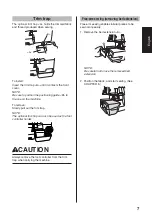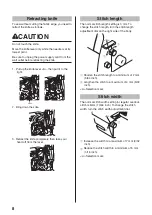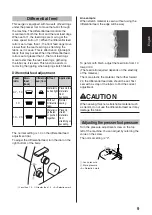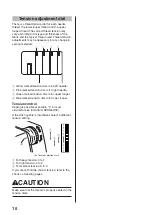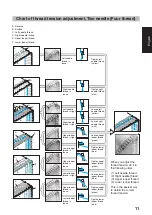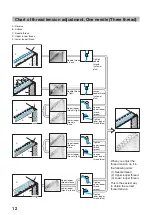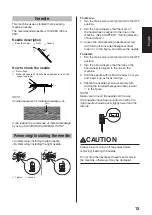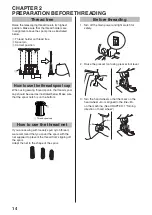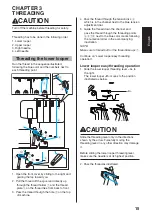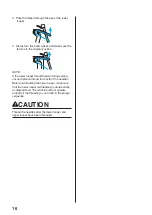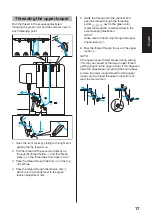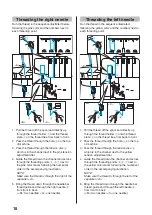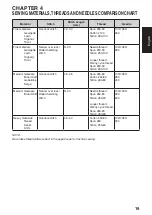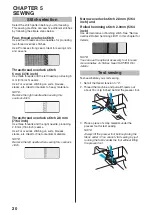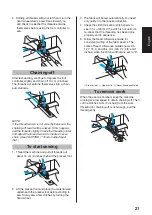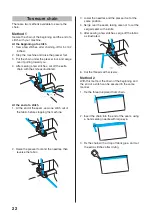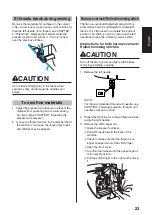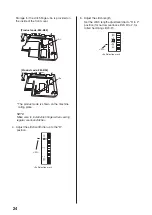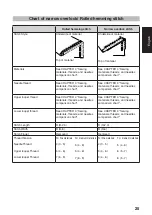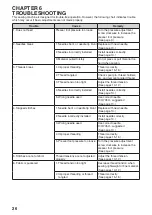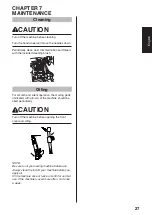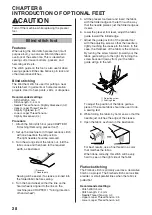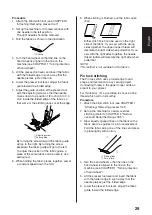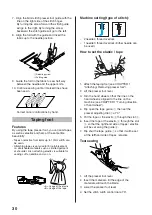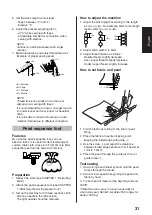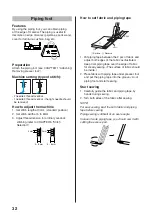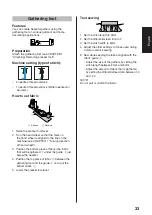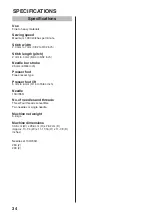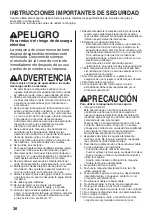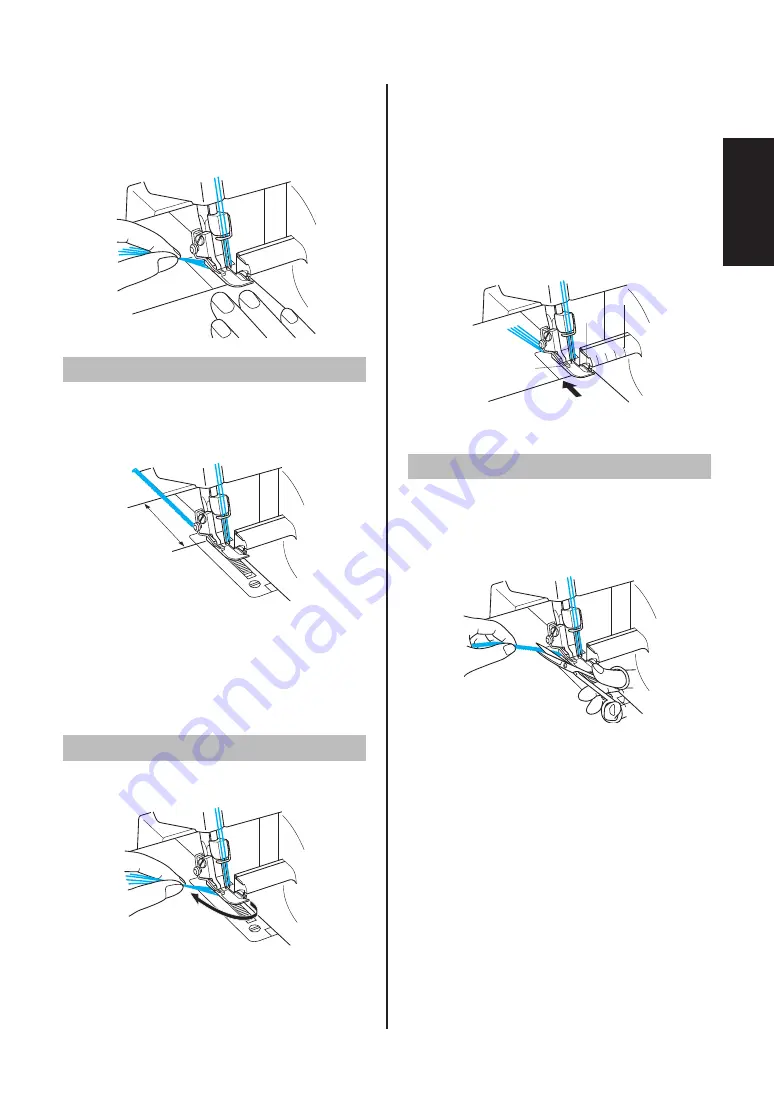
21
English
3. The fabric will be fed automatically. You need
only guide it in the required direction.
4. Check the stitch formation (stitch chain) to
see if it is uniform. If the stitch is not uniform,
re-check that the threading has been done
properly and in sequence.
5. Follow the Seam Allowance Guide for
consistent cutting of the fabric seams. The
scale of Seam Allowance Guide shows 9.5,
12.7, 15.9, and 25.4 mm (3/8, 1/2, 5/8, and 1
inches) when the stitch width dial is set to "5".
1
2
3
1
Presser foot
2
Upper knife
3
Seam Allowance Guide
To remove work
When the seam is finished, keep the machine
running at a low speed to obtain chaining-off. Then
cut the stitches 5 cm (2 inches) from the work.
If feeding for chaining-off is not enough, pull the
thread gently.
4. Holding all threads with your left hand, turn the
hand wheel slowly a few times toward you,
and check to see that the threads entwine
themselves before using the foot controller to
sew.
Chaining-off
After test-sewing, continue to depress the foot
controller slightly and chain off 10 cm (4 inches).
The threads will entwine themselves into a chain
automatically.
NOTE:
If the thread tension is not correctly balanced, the
chaining-off result will be uneven. If this happens,
pull the threads slightly. Check the threading order
and adjust the thread tension to create an even
chain. (See CHAPTER 1 "Tension adjustment
dial".)
To start sewing
1. Thread the machine and pull all threads out
about 15 cm (6 inches) behind the presser foot.
2. Lift the presser foot and place the material well
underneath the presser foot before starting to
sew. Slowly sew a few stitches by turning the
hand wheel.

